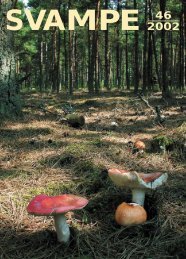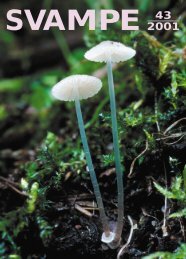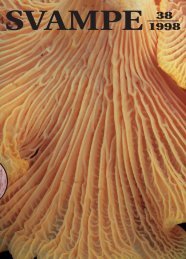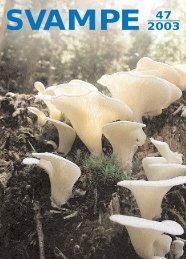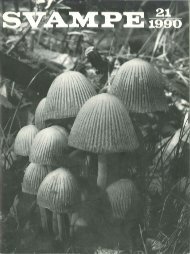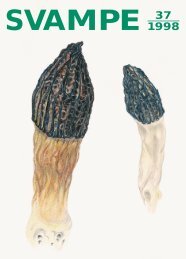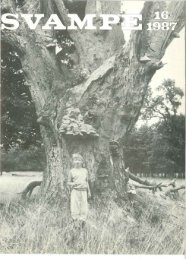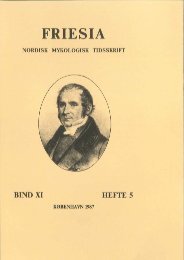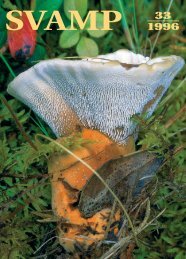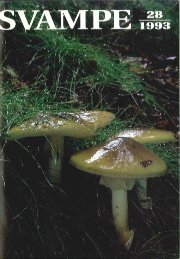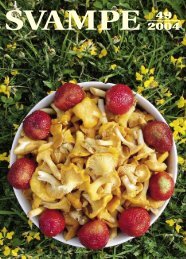Friesia X, 4-5
Friesia X, 4-5
Friesia X, 4-5
Create successful ePaper yourself
Turn your PDF publications into a flip-book with our unique Google optimized e-Paper software.
- 274 -<br />
usually suppcrted only a single species, if any at all, most probably<br />
due to its small area. However, on one occasion Anthracobia maurilabra,<br />
Peziza praei ervisa , and Tricharina gilva occurred together.<br />
Table 2 shows the finds of fireplace fungi on picnic hearths near<br />
Godhavn. Tricharina gilva appears as the most common species. The<br />
occurrence of Geopyxis carbonaria on a picnic hearth in a dwarf<br />
shrub heath with Salix qlauca, S. herbacea, and Empetrum hermaphroditum<br />
is interesting as this species has hitherto only been re <br />
corded for localities with coniferous trees.<br />
OCCURRENCES AFTER<br />
EXPERIMENTAL BURNING<br />
An attempt was made to investigate the influence of the vegetation<br />
type and the time since burning on the fungus flora of burnt<br />
ground. 25 and 20 experimental plots were burned in the Blæsedalen<br />
valley, near Godhavn, in the middle of June 1971 and 1972 respectively.<br />
Each plot measured 1 square meter; it was drenched with 0.5-1 liter<br />
gas oil and ignited. The burning lasted from 5 to 15 minutes, depending<br />
on the vegetation type. The ground was left scorehed and with<br />
some charred wood in those cases where B etula nana and Salix glauca<br />
were present. The plots were allocated as follows (1971 + 1972) :<br />
Salix glauca-scrub on moist ground (5 + 5), B etula nana-h eat h<br />
(5 + 5), Empetrum hermaphroditum-heath (5 + 5), Vaccinium uliginosum-heath<br />
rich in lichens (5 + 5) , and Salix herbacea snow-bed<br />
(5 + O).<br />
This experiment largely failed because the experimental plots had<br />
been placed in relatively large areas of homogeneous vegetation,<br />
which were devoid of any relief that could serve as shelter against<br />
desiccation. Even in the relatively moist summer of 1972, the soil<br />
surface dried out in the course of one or two days after rainfall.<br />
Only a single plot in the Salix glauca-scrub, burned in 1972, yielded<br />
fruit bodies: Mycena aetites 18.8.1972, 8 weeks after burning, and<br />
Mycena uracea 14.9 .1972 , 12 weeks after burning.<br />
FLORISTIC INVESTIGATION OF LARGER AREAS<br />
OF BURNT NATURAL VEGETATION<br />
1. kuanit, ca. 4 km east of Godhavn. A smal1 a rea, only 25 square<br />
meter. Burned about August 1971, visited 15. September 1972, 13




